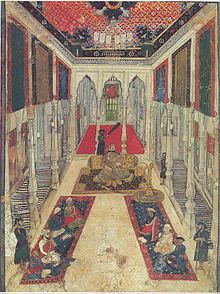


The following list includes a brief about the titles of nobility or orders of chivalry used by the MarathasofIndia and by the Marathis/Konkanis in general.
The titles used by royalty, aristocracy and nobility of the Maratha Empire
(Chitnis)
Desais were the rulers of Kudal (Sindhudurg) in Maharashtra.[25] [26] [27] Desai, or a loftier compound, was a rare title for rulers of a few princely states, notably - Raja Sar Desai in the Maratha Savantvadi State from 1627 until the adoption of "Raja Bahadur" in 1763.
Hereditary rights of Karhades were those of Desai, district officer, or Deshmukh, and Sardesai, senior district officer.